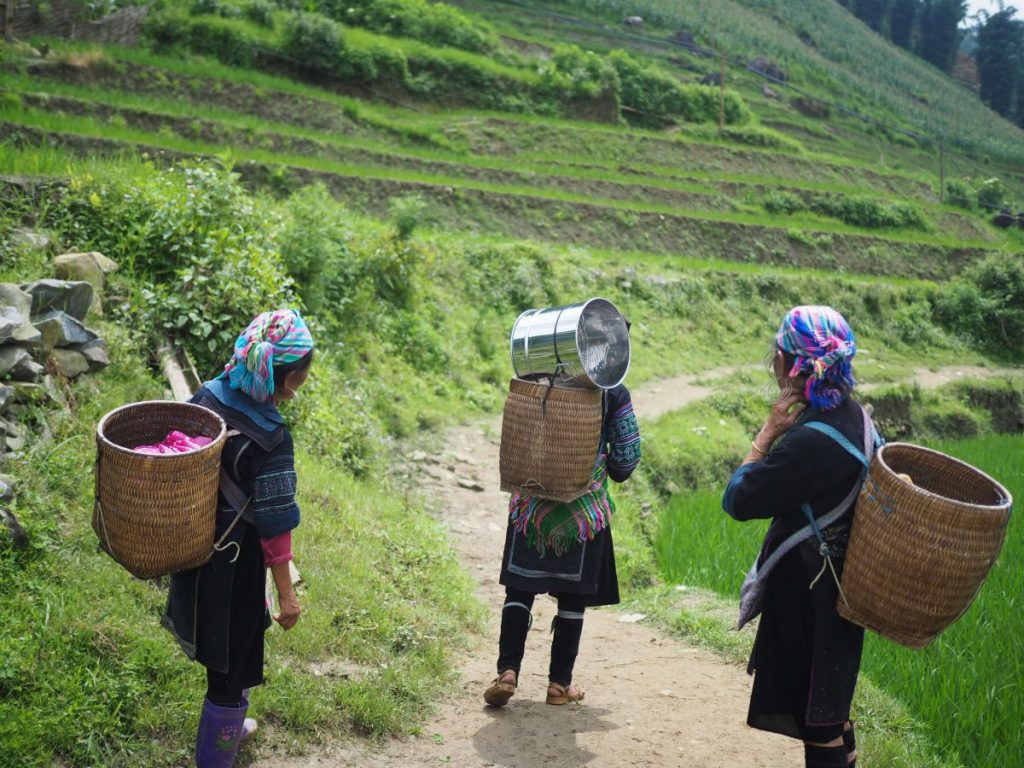
This coming week, the world’s eyes turn to Glasgow, Scotland, where the COP26 conference — a meeting of countries to tackle climate change — takes place Sunday through Nov. 12. The meeting is expected to address several challenges, including food security, carbon markets, and how much rich countries should pay to bolster poorer nations’ ability to adapt to a rapidly changing world. It also has huge implications for gender politics.
Climate change is an existential threat to people and the planet, and it’s far from a gender-neutral phenomenon, says Mayesha Alam, a senior fellow at the United Nations University Centre for Policy Research in Washington, D.C. “Women, especially from poor and marginalized backgrounds, are disproportionately and uniquely affected by the impacts of climate change.”
That’s because women are the majority of the world’s poor, and especially of the ultra-poor, who live on less than $1.25 per day. That makes them vulnerable to any bumps in life, especially ones that could displace them from their homes and force them to find new places to live.
Women are more likely to be small farm owners — and as climate change alters the arability of land, it is more difficult for them to move and grow food in other places that may be more favorable. Data show that women are less likely to have identifying documents that prove their land ownership, and even less likely to have documents that might give them insurance coverage.
A new study, out this week, showed how women’s access and ownership rights to land and trees are key to addressing global warming, biodiversity loss and the inequity crisis.
When climate-related disasters hit, women are more likely to be killed or injured. For example, an Oxfam report found that after the catastrophic 2004 Indian Ocean tsunami, women comprised over 75 percent of deaths in some communities. Alam writes that this was attributed to the fact that socially constructed gender roles tangibly shaped not only the prospects of survival for men and women, but also quality of life in the aftermath of disaster for those who survived.
In a recent U.N. poll of young people in South Asia, 78 percent said that climate change has impacted their studies. More girls reported that climate change affected their daily journey to school.
Even without acute disasters striking, climate change can adversely impact women and girls’ everyday existence. They are often tasked with gathering firewood, water or other supplies — in Africa, women and girls collect 60 to 80 percent of firewood for families’ use, according to a recent report on women and climate change authored by Alam. Deforestation means they have to search farther afield for supplies.
As they have to travel farther from home to accumulate these household items, the risks to their personal safety increase. Also, these tasks leave less time for other types of work or educational pursuits. “In conflict settings, the farther women and girls have to travel, not only the harder it is to collect these essential resources but also the more they are exposed to violence, movement restrictions, and other security risks,” Alam says. Research also shows that domestic violence spikes in the wake of economic and social pressure in the wake of ecological upheaval, in developing countries as well as developed ones.
Many climate groups are eyeing the meeting to see what issues are at the forefront. On Nov. 9, negotiations are specifically expected to address gender equality and the full and meaningful participation of women and girls in climate action. Another topic to be raised is climate financing, a term used to describe how resources are allocated from developed to developing nations to tackle climate change — and that financing has a gender component as well. Meeting organizers say developed countries must make good on their promise to mobilize $100 billion per year to reduce emissions to net zero by 2050.
Alam is also watching the gender makeup of the delegations tasked with making those decisions. The delegations can change until the start of the summit. Are those groups made up of equal numbers of men and women? “We’re ultimately talking about who gets to make decisions and how resources are allocated,” says Alam. If national delegations don’t include women, that’s half the population of those countries and thereby their talents and perspectives that are left essentially unrepresented. This is an issue of equality and efficacy.”
Tracy Mann, a project director for Climate Wise Women says she has very little expectation for the meeting, as she hasn’t seen women’s voices elevated in past COP meetings. But “what is important is that women show up to these events,” she says, because that at least means having a seat at the tables of power. “My focus is always on the marginalized women, the women for whom it is hard to get access — and getting those voices as close as possible to the seats of power.”
For many indigenous women leaders, even getting into the summit has been a challenge. For participants coming from countries without widespread vaccinations, it has been hard to figure out logistics and how to pay for a quarantine hotel, prompting some groups to call for the conference to be postponed.
“My personal belief is that the moment the world finally takes women and climate change seriously, we will see huge advances in the health and well-being of our planet,” says Mann.
The Global Women’s Assembly for Climate Justice is urging world leaders to include women at every level of the summit, from scientists to politicians to activists. In a seven-point plan delivered during the UN General Assembly in New York in September, the women’s assembly called on governments and financial institutions to act on the critical findings of the recent report from the Intergovernmental Panel on Climate Change — the United Nations group responsible for advancing climate change information — in an equitable way.
“The ocean is in our backyard, and literally on our front lawn. There is no higher place that is safe to retreat to,” Hilda Heine, former president of the low-lying Republic of the Marshall Islands, told the assembly. “But we also have lots of knowledge and innovations to share, as bright spots for others in the fight against climate change.”
Alam says she sees glimmers of hope in young peoples’ actions around climate — for example in the fashion industry, a resource-intense production. Women hold the purchasing power in most families, she says, and they can tilt their money to go towards more climate-friendly places. It’s important to be hopeful, she says, but also grounded. “The key is optimism paired with action, and one reinforces the other. That’s what the driving force needs to be.”




